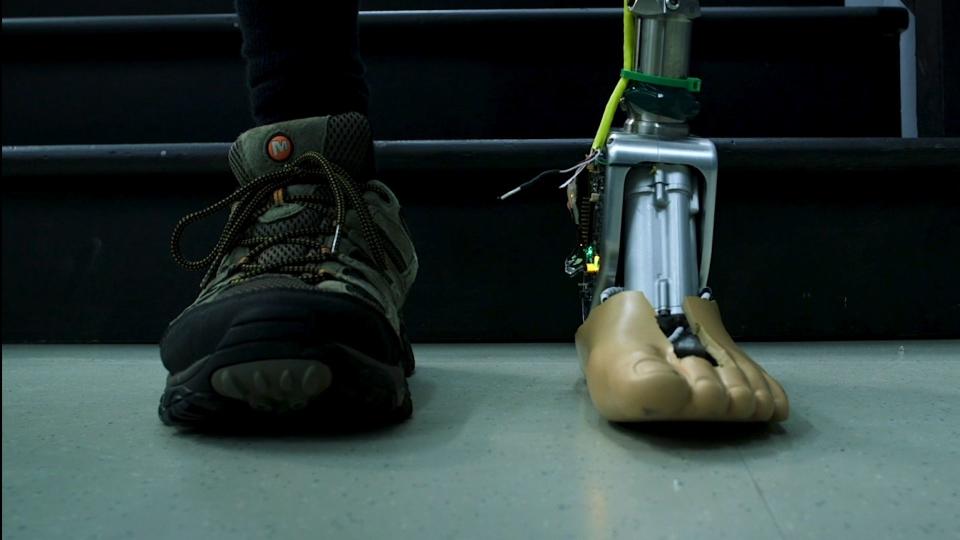'Dead' woman wakes up in a morgue. Why does this keep happening?

A woman was taken to the morgue and pronounced dead after a car crash near Johannesburg in South Africa.
The only problem? She wasn't dead.
SEE ALSO: Shane, somehow, is reportedly coming back to 'The Walking Dead'
According to the BBC, the unnamed woman woke up in a mortuary fridge after a car pile-up on June 24 which reportedly left two others dead.
The woman was discovered by a morgue worker, according to the news service, and she is now recovering in a hospital east of Johannesburg.
The woman's family declined to comment on the incident to the BBC, but said, "We need answers."
So, how did this happen? An investigation is reportedly underway. Ambulance company Distress Alert, who mispronounced the woman dead, told news publisher Times Live, “Equipment used to determine life showed no form of life on the woman."
"This did not happen because our paramedics are not properly trained," the company's statement added. "There is no proof of any negligence by our crew."
How does this keep happening?
It's not the first time this has happened. In fact, it's not as uncommon as you'd think.
In Poland, a 91-year-old woman woke up in a morgue fridge after having been declared legally dead. A similar thing also happened to a 24-year-old Kenyan man, a 61-year-old woman in Delaware, and a 30-year-old man in Australia. A 78-year-old man in Mississippi made it all the way to a funeral home in a body bag before workers discovered he was alive.
One of the most horrifying cases involved a prison inmate in Spain's Asturias region, certified dead by no less than three doctors, who just happened to regain consciousness just before he was about to undergo an autopsy.
There are a few theories on why this happens, and it's always dependent on the "dead" person's situation — how they supposedly "died" — and the country where they're legally declared dead.
The Guardian points out one of the most common theories. Some people experience a condition called catalepsy, an immobilising nervous disorder that replicates rigor mortis (the stiffening of muscles after death), decreases the body's response to stimuli, and slows breathing. You can see how they'd look pretty dead to a first responder.
The inmate in Spain was thought to have suffered from catalepsy. Whether the woman in South Africa suffers from this condition remains to be seen, but the first responders did say their equipment "showed no form of life on the woman." We're not sure which equipment they used yet.
There's also what's called the Lazarus phenomenon, described as delayed return of spontaneous circulation (ROSC) — basically, when a person who's suffered a cardiac arrest "comes back to life" after you've stopped performing CPR. It's coined from the Bible story of Lazarus, who was said to have been resurrected by Jesus days after his death, and is apparently very rarely reported.
Or it could be biofeedback. That's when an individual learns to directly control activation of localised regions within the brain — meaning you can supposedly learn to lower your heart rate to make it look like you're dead. Why you would want to do this? James Bond does something like it in Die Another Day, so spying, I guess?
So, how does a person make it all the way into the morgue fridge and survive in there? According to The Conversation, in very cold circumstances (let's say, an avalanche, or a mortuary fridge), a body's cells need less oxygen in the lower temperature, so they lapse into a state of hibernation. Until they're revived, the body will remain in a preserved state of unconsciousness — until it's really, really not.
Another thought? Medical professionals could have just made a bad call. In the Australian case, an investigation found that after just 12 minutes examining car crash "victim" Daniel Huf, paramedics declared him dead after noting he was taking only four breaths a minute.
Yup, still breathing. But declared dead by first responders. Figure that one out.
How can you legally determine death?
Legally confirming death used to be straightforward, back in the old days before technology made things more complex. Now, it's possible to keep the heart beating after the brain stem has stopped functioning, but that's another kettle of fish.
In the U.S., each state has laws for determining death, whether as cardiopulmonary death (heartbeat and breathing has stopped) or brain death (brain functions have stopped).
These two categories have been identified by the Uniform Determination of Death Act (UDDA), approved by both the American Medical Association (AMA) and the American Bar Association (ABA), which stipulates that either type of death must be "irreversible" to declare someone dead.
And while another conversation for another time, there are legal and ethical considerations to make if a person suffers from brain damage, not necessarily death, but their heart is still beating.
Who gets to legally declare it?
"There is variation between the states and even with counties as to who is permitted to pronounce an individual dead," writes forensic experts Jason Payne-James and Roger Byard in the Encyclopedia of Forensic and Legal Medicine. "In some locations, civilians are allowed by law to pronounce an individual dead. In many locations emergency medical technicians, paramedics, and even first-responders are permitted to declare death."
"Most law enforcement officers and firefighters can make a pronouncement, however; they typically contact the medical examiner or coroner’s office to certify the death."
In the case of the not-so-dead woman in South Africa, it appears the first-responders working for Distress Alert were the ones doing the legal pronouncing, and as detailed above, they're blaming their equipment.
So, I'm going to have a cup of tea now and never go outside again.
WATCH: This 'smart' prosthetic ankle makes it easier to use stairs


